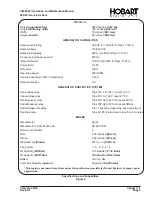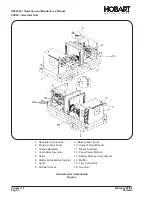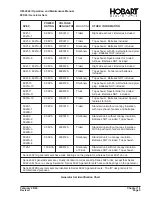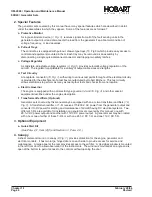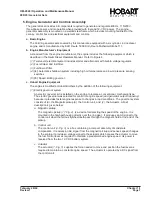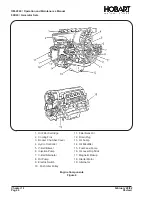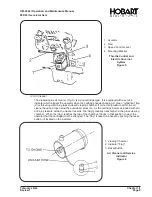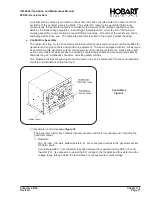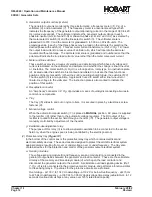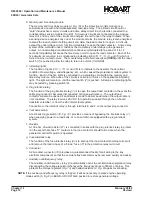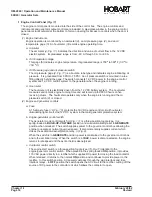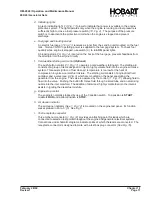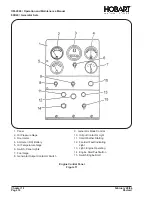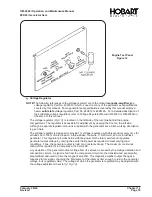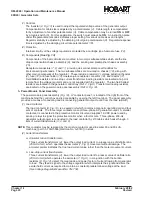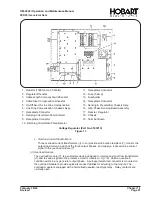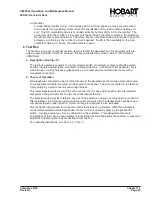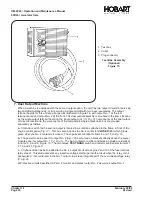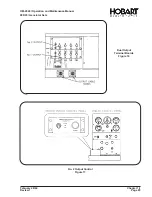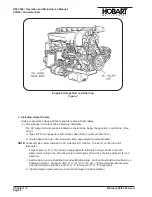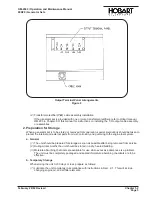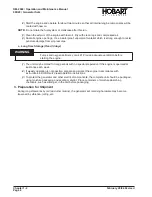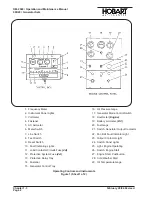
d. Indicating lights
A green indicating light
(13, Fig. 11)
glows to indicate that power is available to the engine
protective system. The light operates only when the engine is running and fuel pressure is
sufficiently high to close a fuel pressure switch
(19, Fig. 4)
. The purpose of the pressure
switch is to deactivate the protective circuit when the engine is stopped and prevent
discharge.
e. Fuel gage and blocking diodes
An electric fuel gage
(7, Fig. 11)
receives a signal from the sending unit mounted on the fuel
tank. Twelve-Volt DC operating power is supplied to the fuel gage system. To check fuel
quantity while engine is stopped, use switch
(6)
to turn ON panel lights.
A blocking diode
(10, Fig. 14)
, located on the back of the fuel gage, prevents feedback from
the alternator into the engine circuitry.
f. Cold weather starting aid control (Optional)
The push-button control
(11, Fig. 11)
operates a cold weather starting aid. The starting aid
consists of a group of items designed to inject a highly volatile fluid into the engine air intake
system. This assists ignition of fuel when air temperature is too low for the heat of
compression to ignite a normal fuel mixture. The starting aid consists of a cylindrical fluid
container and a valve
(see 6, Fig. 3)
which are mounted on the panel separating the
generator from the engine. The valve is operated by the control
(11, Fig. 11)
allowing fluid to
flow into the valve. Pushing the button IN forces fluid through a small tube and an atomizing
nozzle into the inlet manifold. The addition of atomized, highly volatile fuel into the inlet air
assists in igniting the diesel fuel mixture.
g. Engine stop control
The engine is normally stopped by use of the 3 position switch. Top position is START,
middle is RUN and bottom position is STOP.
h. Air cleaner indicator
The air cleaner indicator
(See 1, Fig. 12)
is mounted on the engine test panel. Its function
was explained in Para. 5, (3), See Fig. 5.
i.
Test receptacle connector
This amphenol connector (
1, Fig. 12)
provides an attaching point for leads which are
connected to selected test points throughout the engine and generator electrical systems.
Connections and schematic diagrams indicate points at which the leads are connected. The
receptacle connector is designed to mate with a test box plug connector
(See Fig. 15)
.
OM-2040 / Operation and Maintenance Manual
90D20 / Generator Sets
February 28/94
Chapter 1-1
Revised
Page 17
Summary of Contents for 6921 Series
Page 2: ...This page intentionally left blank ...
Page 223: ......
Page 224: ......
Page 225: ......
Page 226: ......
Page 227: ......
Page 228: ......
Page 229: ......
Page 230: ......
Page 231: ......
Page 232: ......
Page 233: ......
Page 234: ......
Page 235: ......
Page 236: ......
Page 237: ......
Page 238: ......
Page 239: ......
Page 240: ......
Page 241: ......
Page 242: ......
Page 243: ......
Page 244: ......
Page 245: ......
Page 246: ......
Page 247: ......
Page 248: ......
Page 249: ......
Page 250: ......
Page 251: ......
Page 252: ......
Page 253: ......
Page 254: ......
Page 255: ......
Page 256: ......
Page 257: ......
Page 258: ......
Page 259: ......
Page 260: ......

